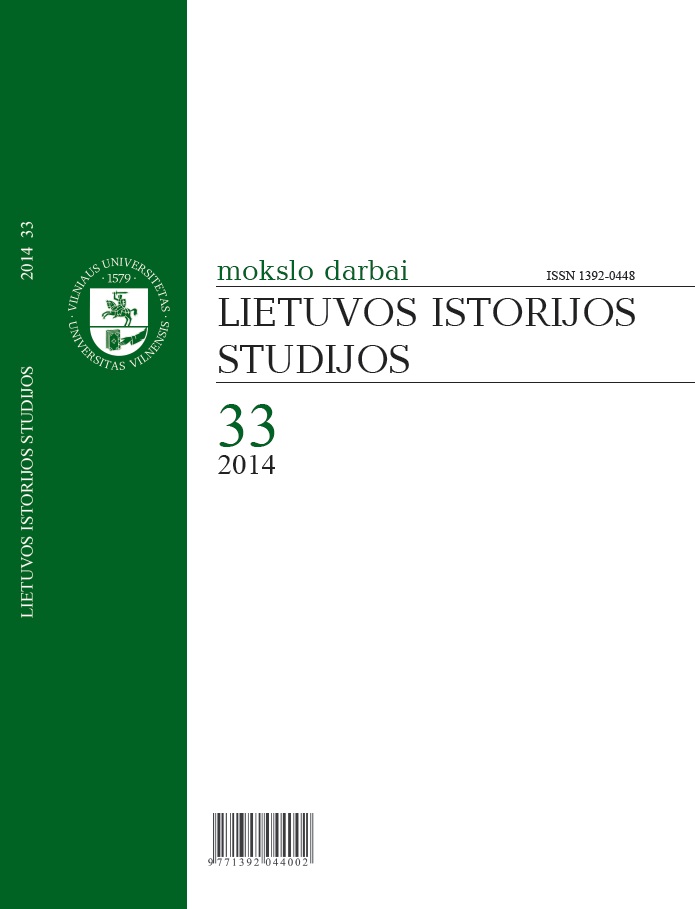
We kindly inform you that, as long as the subject affiliation of our 300.000+ articles is in progress, you might get unsufficient or no results on your third level or second level search. In this case, please broaden your search criteria.

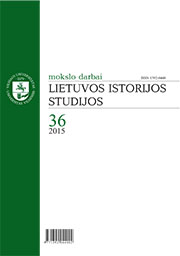
The article examines changes of the socio-economic situation in Lithuania in the 1940s during the crisis (1931–1935). These changes influenced a wider alteration of the Lithuanian society. The article reveals the specifics of the crisis in Lithuania, the economic instruments of the government and propagandistic programs, which affected the attitude of farmers to the agricultural traditions. Organized Lithuanian business structures promptly appeared during the crisis, as well as the society became more economically active and creative.
More...
Consideration of the development of the fate of the communities of national minorities is on the agenda of the present-day Lithuanian historiography and arouses considerable interest. This attempt is related to the aspiration to go deeper into the ins and outs of the development of the German community in Lithuania. The aim of this article is to reveal the characteristics of the fairly statistically fixed metric of the said community of 1938, collected by way of watching it. Lithuanian special operational services collected information about the moods prevailing in the groups of national minorities on a regular basis, and the German case was no exception. A secret certificate of the State Security Department of 1 March 1939 contained a survey of the 1938 cultural and economic situation of the Lithuanian Germans. The latter data summary contains the information about the German organisational structures (public organisations, confessional formations, establishments of institutional education and economic activities of the Germans (factories, enterprises, shops, mills, saw-mills and others, as well as independent agricultural entities). The author of the article, assessing the whole complex of loyalty characteristics recorded in the summary (the owners and their subordinates are referred to as loyal and disloyal, though, unfortunately, the data are incomplete) and applying the logistic regression model vhich established that chances of loyalty of the German women were greater than those of the German men. During the investigations, the present author was able to establish that chances of loyalty of the German community in southern Lithuania were slightest (they could have been determined by the factor of the border with Germany), and the highest chances of loyalty arose in the case of the German community in Central Lithuania. In the opinion of the present author, the ratio of persons belonging to another nation and the Germans on a defined territory also exerted influence on the characteristics of loyalty.
More...
The paper is a peculiar sketch overview of some most important problems, clear understanding of which is indispensable to a successful disclosure and understanding of the processes of the Communist reconstruction of the higher humanitarian education in 1920-30-s on the basis of scientific, educational and organizational ideas which came from the Russian scientific and political ruling communities. These ideas, if necessary, were to be taken by the other nations of the USSR. The development of the higher humanitarian education is presented in the paper by the example of Belarus where the repeated institutionalization of the higher education and science took place after October 1917. In fact, it was a socialist reconstruction of all elements of culture in the context of all-out socialist modernization of the state and society. There is accentuated in the paper the need to consider the appropriate processes against the background of the changeable context of socio-economic and political situation of the interwar period in the Byelorussian SSR as an integral part of the USSR.
More...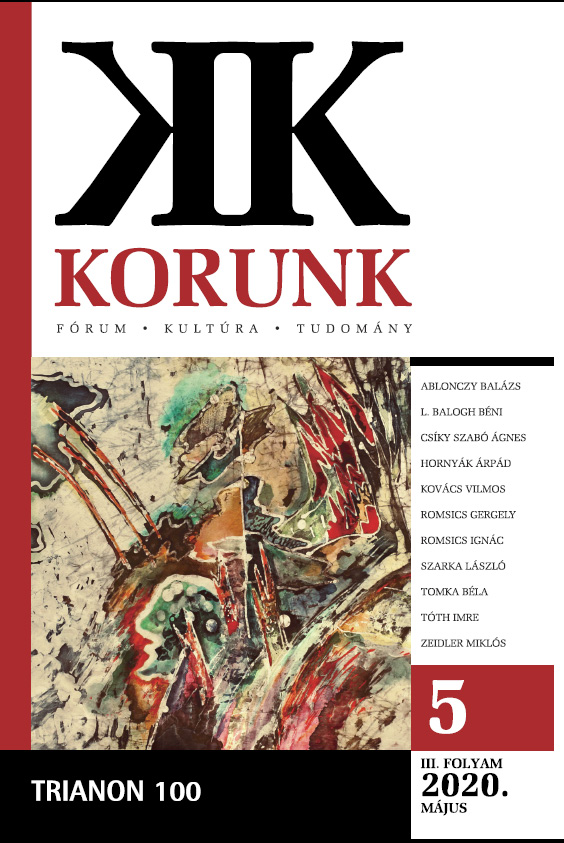
The Czechoslovak-Hungarian state border, based on still much debated principles, was accepted relatively quickly by the Czechoslovak committee and subcommittee at the Paris Peace Conference. Among the causes for this development, the study mentions the antecedents of the Slovakian autonomy aspirations as well as the demarcation decision of the French Ministry of Foreign Affairs, urged by Beneš and adopted on 23 December 1918. From the four different alternatives envisioned by the Czechoslovak government, Beneš designated as the most important the Danubian border and the railway line along the valley of the Ipoly in his territorial claims presented in the Supreme Council on 5 February 1919. It was the Bratislava bridgehead, the issue of the Csallóköz, Salgótarján and Sátoraljaújhely, as well as of the railway line lying north of the city that provoked most controversy. Nevertheless, the new proposal of the Commission regarding all the borders of the new state, including the Transcarpathian border region, was completed on 12 March and included without substantial changes into Clemeceau’s announcement from 13 June 1919 concerning the Czechoslovak-Hungarian and the Romanian-Hungarian borders.
More...
Hungary's post-Trianon economic situation is still treated rather onesided by the relevant literature, and the same holds true for the wider public discourse. The Hungarian discourse of the period on the economic effects of the Treaty of Trianon focuses on the losses of natural resources, assuming that the main factors of economic growth are represented by the raw materials and other natural resources. However, the traditional interpretation of the economic effects of Trianon precludes the explanation of some basic facts of economic history. This study shows that, in international comparison, the economic performance of post-Trianon Hungary was not weaker than its relative performance in the period of dualism of the AustroHungarian monarchy. Hence, the peace treaty did not have such a negative economic effect, neither in the medium, nor in the long term, as it is often customary to assume. One of the main reasons for this fact is that natural resources were not among the main factors of economic growth even in the interwar period, and the drivers of progress consisted, rather, in the structural changes of the economy, technological development, and the human capital, which were less affected by the peace treaty.
More...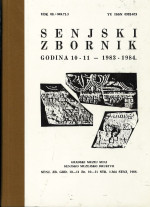
Man betont die Wichtigkeit des Hafens Senj in Vergangenheit und zwischen zweien Kriegen 1918 — 1941, und — damit verbunden — die Lage der Senjer Arbeiter.Darum war diese Filiale besonders bedeutsam, da sie ein Mittelpunkt der Sammiung und Schützung der Arbeiter wurde und damit einen Beitrag zur Etwick-lung der gewerkschaftlichen Klassenbewegung gab.
More...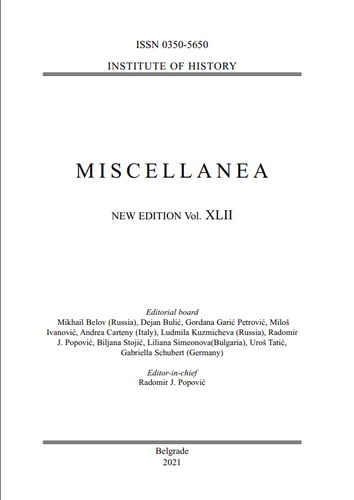
The paper gives a brief outline of activities of Rodolphe Archibald Reiss in the Kingdom of SCS after 1919. A particular focus is placed on Reiss’s links with Macedonia, i.e. then Southern Serbia. On two occasions, in 1921 and 1922, Reiss travelled to Macedonia as a special rapporteur of the Ministry of the Interior. We publish in this paper his report from the journey he undertook in 1921, upon the order of the then Minister of the Interior Svetozar Pribićević. Reiss’s report contains a detailed account of political, social, administrative and social circumstances in Macedonia.
More...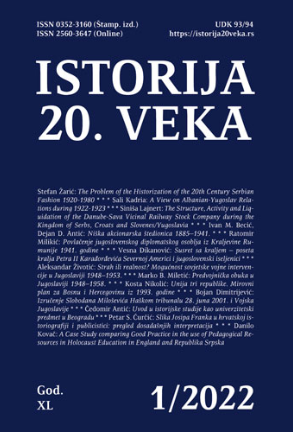
This paper deals with the structure, activity, and liquidation of the Danube-Sava Vicinal Railway Stock Company during the Kingdom of Serbs, Croats, and Slovenes/Yugoslavia. The company, founded in 1912, was based in Budapest and constructed the following railway lines: Vukovar-Ilača and Šid-Sremska Rača-Sava. These private railway lines were exploited by the state. The stock company was solvent. After the collapse of the Austro-Hungarian Empire, the company’s headquarters moved from Budapest to Zagreb. Shortly after the establishment of the Kingdom of Serbs, Croats, and Slovens/Yugoslavia, the railway lines were exploited by the Directorate of State Railways in Zagreb, but after 1921 they came under the jurisdiction of the Directorate of State Railways in Belgrade. According to the Agreement of February 7, 1931, the state redeemed the railway lines of the abovementioned company and thus the company ceased to exist. The company went into liquidation in 1932 and was shut down on April 12, 1933.
More...
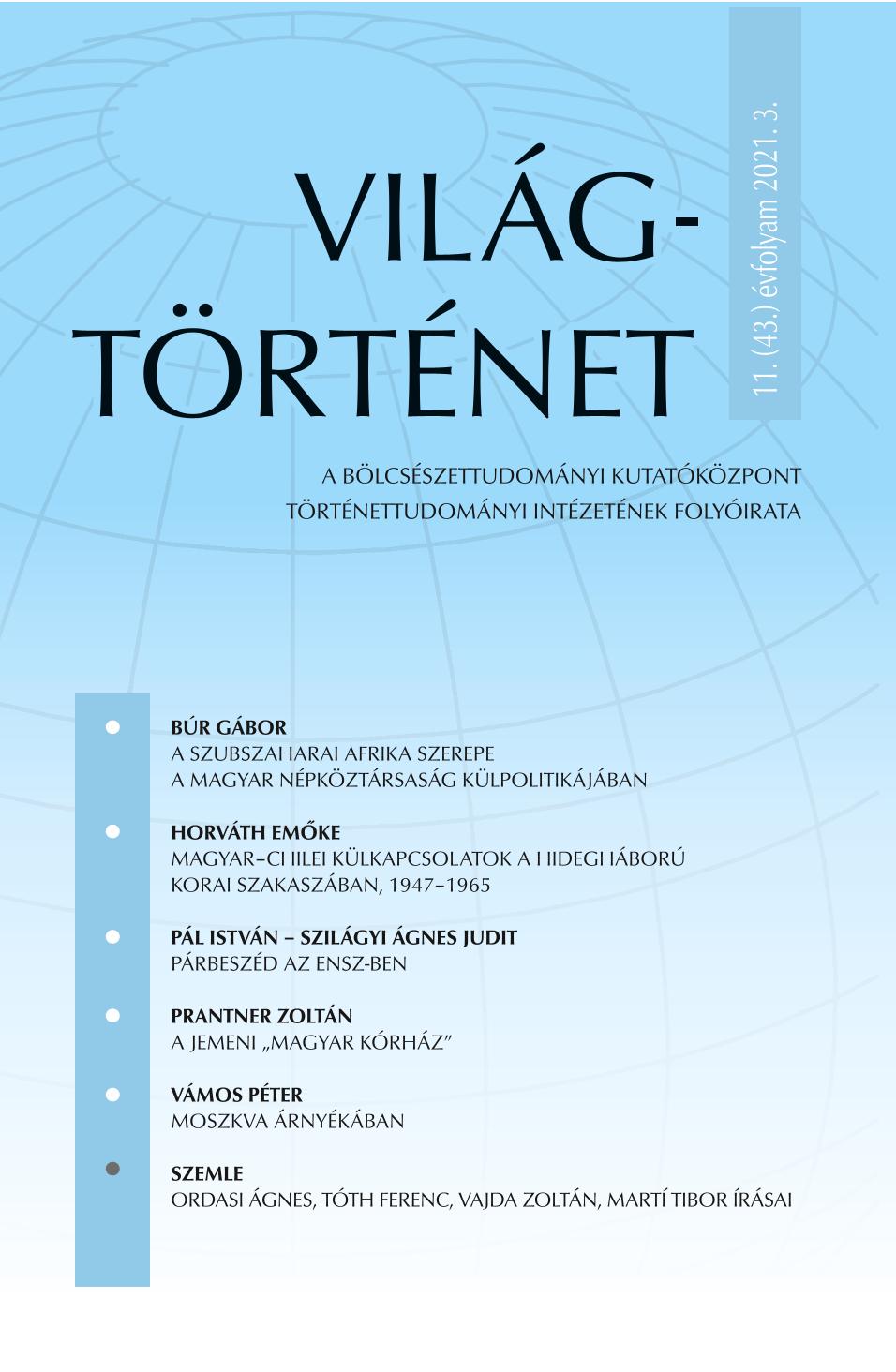
Reill, Dominique Kirchner: The Fiume Crisis: Life in the Wake of the Habsburg Empire. Cambridge, The Belknap Press of Harvard University Press, 2020. 289.
More...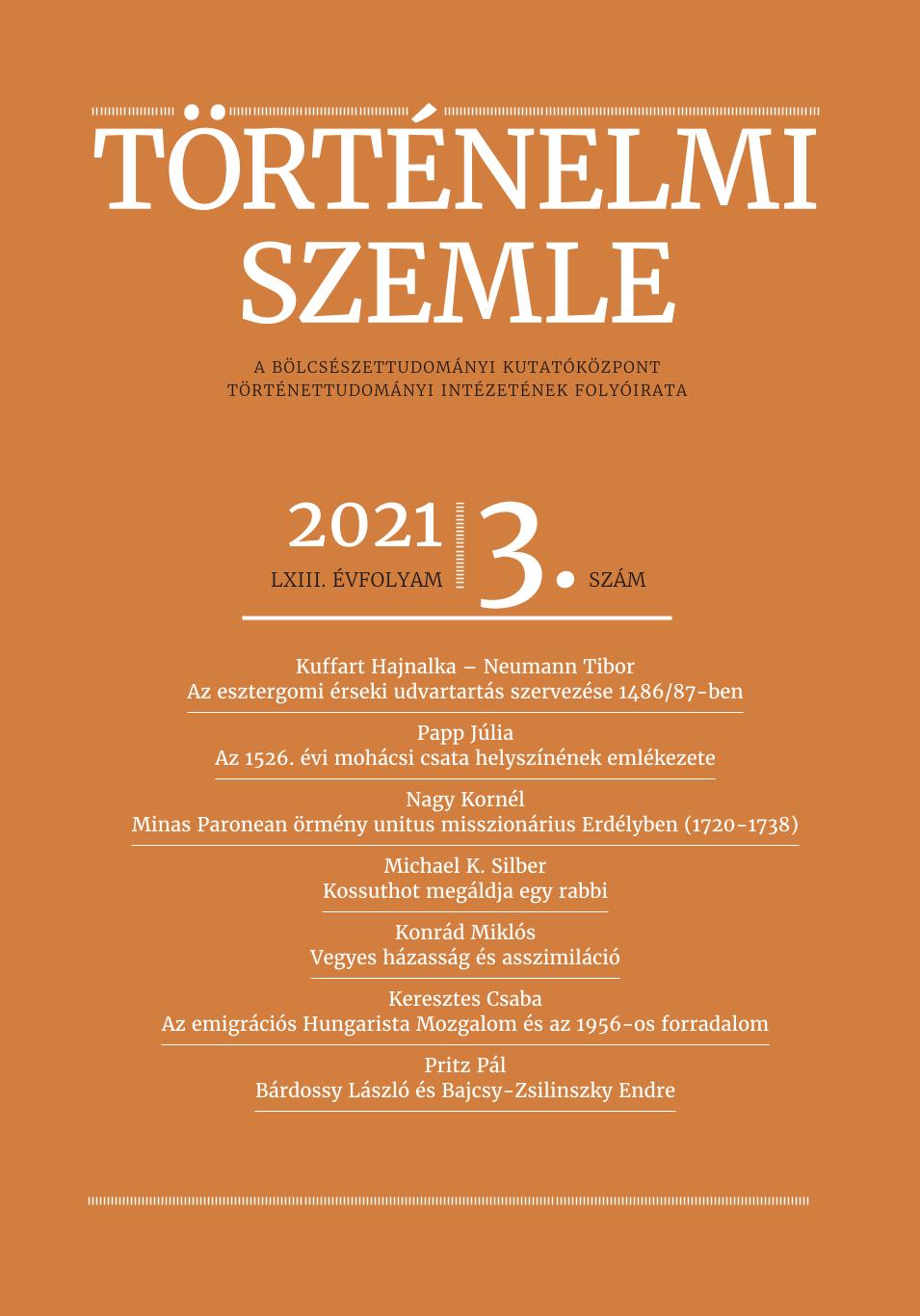
Bartha Ákos: Bajcsy-Zsilinszky Endre. Életút és utóélet. Bp. 2019. (Magyar Történelmi Emlékek. Értekezések.)
More...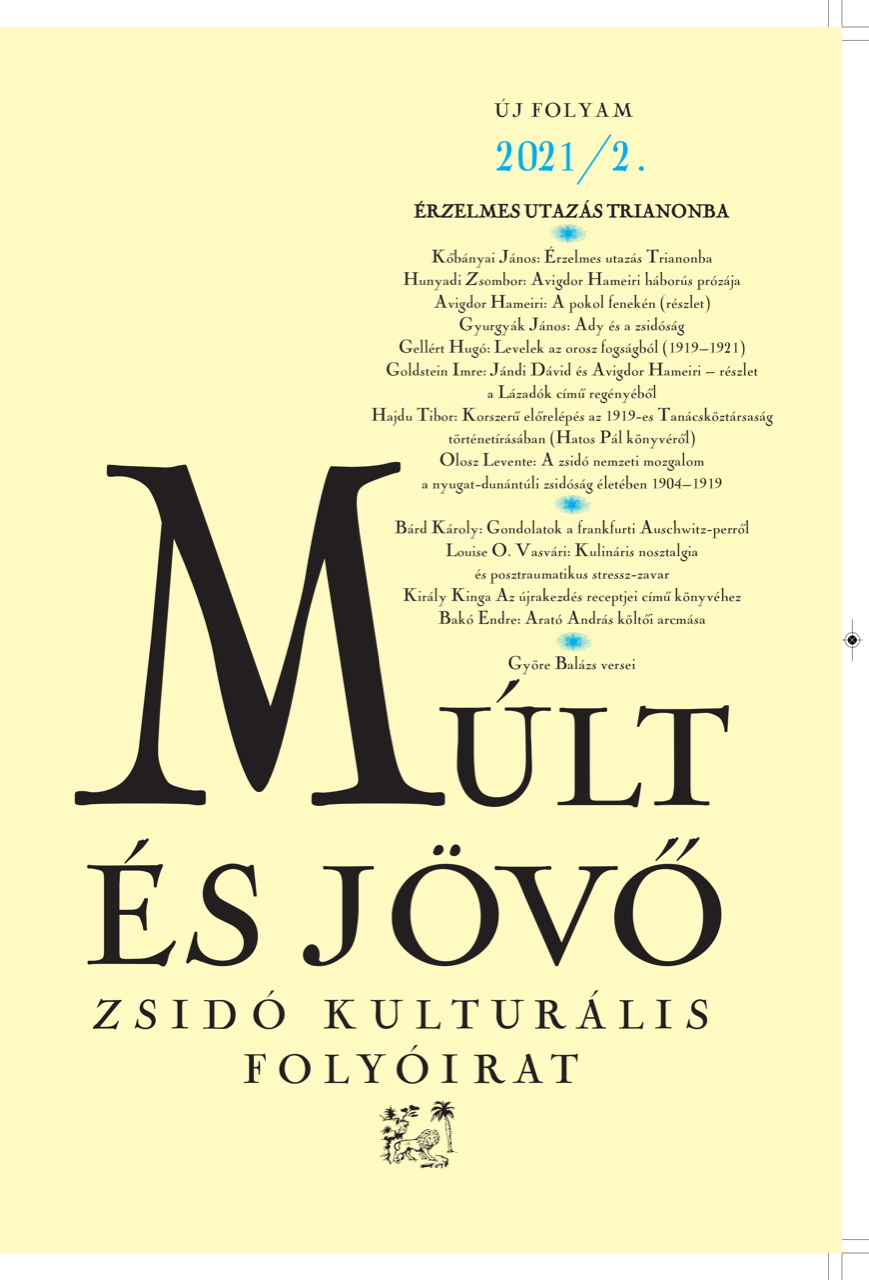
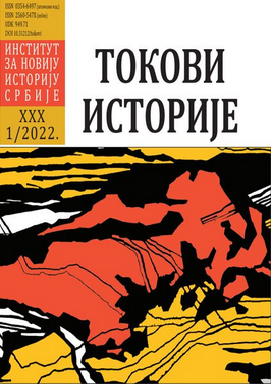
The paper examines the attitudes of monarchist Russian émigrés towards pro-Soviet tendencies in a refugee setting through the case of discovering the plans to establish a communist party in the First Russian Cadet Corps “Grand Duke Konstantin Konstantinovich” in the town of Bela Crkva in 1934. The investigation, subsequent hearings and sentences handed down to the cadets reveal the attitudes and ideas typical of this community in the interwar period, which would influence the political and ideological positioning of Russian émigrés in the Second World War.
More...
Veszprémy László Bernát: 1921. A Horthy-rendszer megszilárdulásának története, Budapest, Jaffa, 2021. 278 oldal
More...

In interwar Czechoslovakia, the construction of a well-founded military establishment was a core component of the state building process. Reflecting broader trends across the post-imperial, particularly post-Habsburg space, Czechoslovak state builders deployed a rhetoric of radical military transformation predicated in part on a rejection of the imperial military legacy. As this article shows, however, certain elements of Habsburg military tradition survived the transition from empire to nation-state. Focusing on the legacy of Bohemia’s old Habsburg regiments, I argue that “imperial” military tradition could be adapted for use in the new republic through a process of selective reimagining. During the interwar period, regimental groups consisting of Czech-speaking Habsburg veterans dedicated considerable time and energy to the project of “nationalizing” Habsburg regimental tradition. By emphasizing the historically Czech character of their former regiments within the broader Habsburg military establishment, these veterans’ groups provided a means by which Bohemia’s old imperial regiments could be incorporated, conceptually, into prevailing interwar narratives of Czech military heritage.
More...
The Slovak Republic of 1939–1945 was established on the doorstep of the deadliest war in history. It almost immediately became an active participant in the war as an ally of Nazi Germany. Moreover, already in March 1939, Slovakia, just after its foundation, found itself in a military conflict with Hungary. These facts were naturally reflected in all spheres of society, including urban spaces. This study aims to analyze interventions in the public spaces of Slovak towns related to a cult of martyrs. There was strong need to justify the new Slovak Republic’s participation in the war. This need became increasingly pressing, especially after the invasion of the Soviet Union, which met with the disapproval of the majority of the population. I therefore ask how the regime responded to this. I am especially interested in following questions: how were public spaces transformed change in an effort to build a martyr cult before and after the attack on the Soviet Union? Were there significant interventions in connection with this event (the declaration of war against the USSR)? Had the symbol of a martyr or a soldier changed, and if so, how? The study is organized chronologically. I analyze interventions in public spaces during the so-called Little War in March 1939, at the moment of entry into the war against Poland in September 1939, and at the moment of entry into the war against the USSR in June 1941. I examine interventions on architecture-material level which involved the renaming streets and the creation of memorials. I also focus on perceptions of the street as a “stage” for military parades or ceremonies in the course of which soldiers were awarded decorations.
More...
Geography and Nationalist Visions of Interwar Yugoslavia. By Vedran Duančić. London: Palgrave Macmillan, 2020. 286 pp. doi: 10.1007/978-3-030-50259-1
More...
With the creation of the Kingdom of Serbs, Croats, and Slovenes after the First World War, the new state got the Kingdom of Romania as a neighbour. Disagreements that existed between the two countries regarding the demarcation in Banat were resolved by the marriage of the King Alexander I Karađorđević and the Romanian Princess Maria Hohenzollern. The royal marriage was the basis for further development of allied relations between the states in the period between the two world wars. The partnership was strengthened by military-political pacts within the framework of the Little Entente and the Balkan Pact. The peace treaties concluded during the Versailles Conference did not guarantee the security of minor European countries such as the Kingdom of SHS and Romania. The revisionist aspirations of the joint neighbours of Hungary and Bulgaria developed friendly relations that Belgrade and Bucharest needed to deter the enemy from taking any action. The Yugoslav public viewed Romania as a friendly country, so diplomatic activities within the two alliances were closely monitored by the press. In addition, many public workers were concerned with analysing perspectives that could benefit the two countries in the future. The fact that Romania was a significant ally was evidenced by the fact that in December 1938 the mission was promoted to the rank of embassy, which was the first embassy in the diplomatic history of the Kingdom of Yugoslavia. In this paper, we intend to present the development of allied relations between the two countries, based on the historical reach of the historiography, as well as the analysis of the writing of the Yugoslav press. Particular attention will be paid to the challenges that the alliances faced during the Third Reich’s penetration into southeast Europe. Although the allies of the Kingdom of Yugoslavia and Romania would find themselves on opposite sides in World War II, there was no mutual war between the two countries, which was a consequence of the built relations in the interwar period.
More...